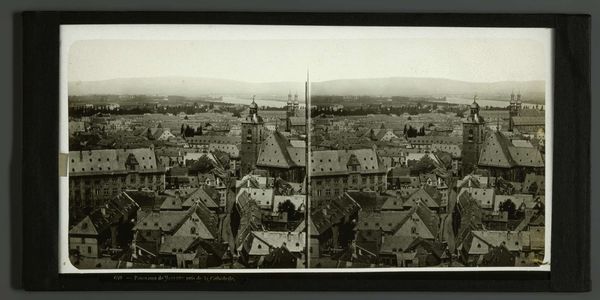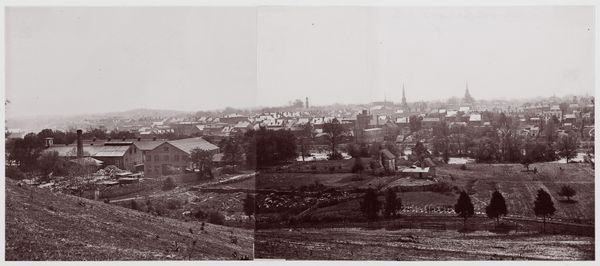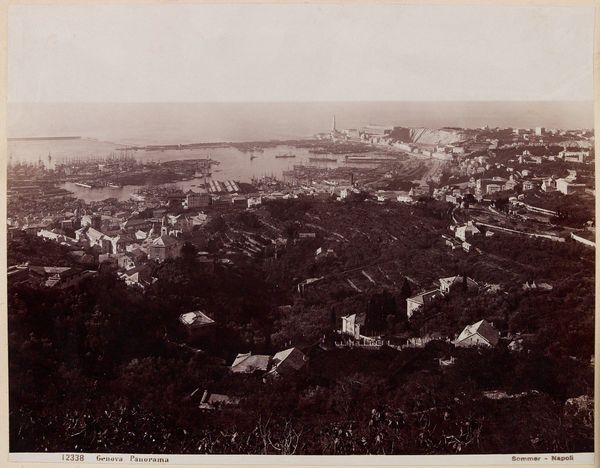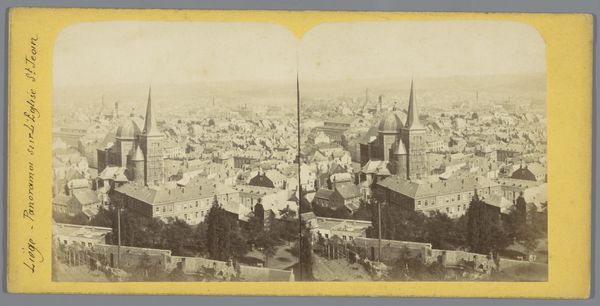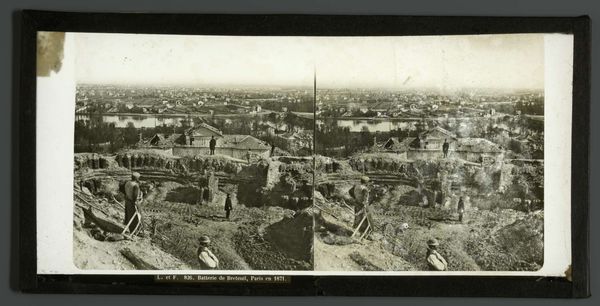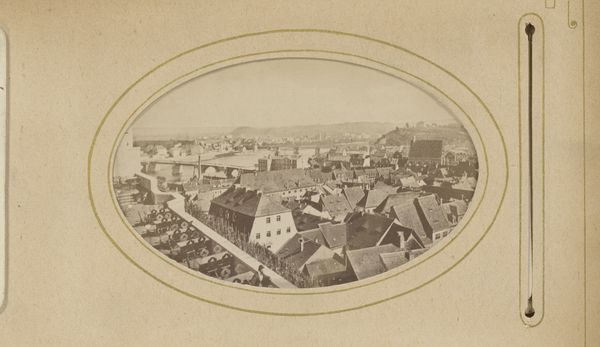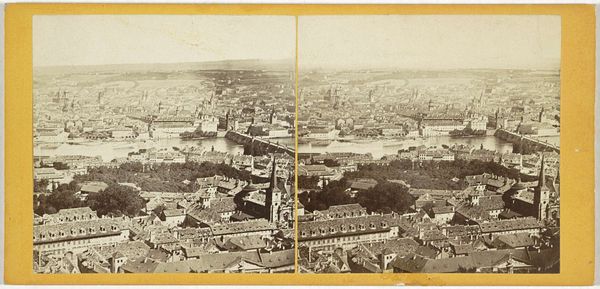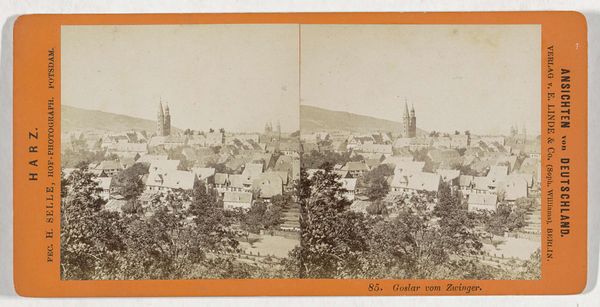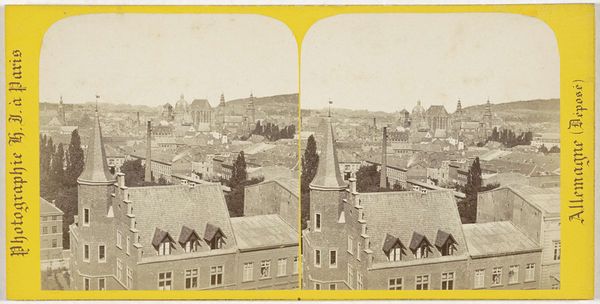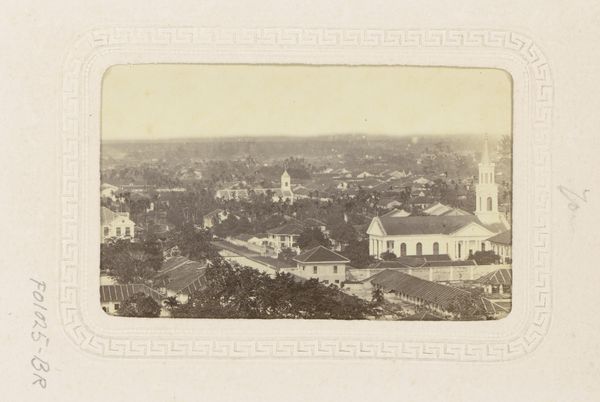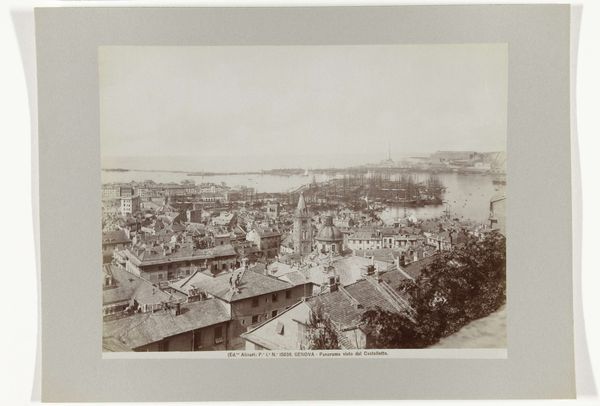
Dimensions: height 82 mm, width 170 mm
Copyright: Rijks Museum: Open Domain
Curator: Today we’re looking at "Gezicht op Bern, Zwitserland"—or "View of Bern, Switzerland"—a photographic print created sometime between 1860 and 1870 by the studio of Ferrier Père-Fils et Soulier. Editor: It’s such a strikingly calm composition. All these rooftops sloping downwards give a sense of gentle order, and the greyscale adds to that antique stillness. The light looks like it’s been carefully considered. Curator: Indeed. The technique employed here is fascinating: this is an early example of photomontage. By the mid-19th century, advancements in photographic printing allowed for the combination of multiple negatives to create a single image. It's not just about capturing a scene; it's about crafting one. The act of piecing these together involved significant labour. Editor: Exactly! This image, beyond its surface charm, participates in broader social and cultural narratives. Bern, as the de facto capital of Switzerland, held a crucial symbolic importance during a period of burgeoning nationalism in Europe. What were the image-makers trying to tell us about the identity and character of the city and nation at this crucial point? This view appears curated and promoted to reflect ideals. It prompts questions about whose perspectives and experiences are prioritized. The calm you observed maybe glosses over deeper conflicts. Curator: Interesting perspective. Speaking of promotion, it is thought these images were produced in huge numbers and sold as popular keepsakes from the growing tourism of the era. It raises fascinating questions about the social status of photography in the art world, or, more appropriately, it questions its very absence at this point in art historical discourse. Were these regarded as craft, as industry, or something else altogether? Editor: Right. Images such as this, presented for consumption, reinforced perceptions. The decision to portray Bern in this way is not a neutral one; the aesthetic decisions have a direct influence on how it was perceived, both internally and externally. We might explore ideas around national identity, visual rhetoric and image making to help challenge our modern-day perception. Curator: I agree, it is useful to reflect how such a landscape mediates its cultural meanings. Examining the materials of the artwork lets us see both artistic expression and modes of labour. Editor: I’m particularly left questioning the very specific choice to promote and mediate these narratives to a large audience through tourist souvenirs. Food for thought about what really shapes perception of our environments.
Comments
No comments
Be the first to comment and join the conversation on the ultimate creative platform.
